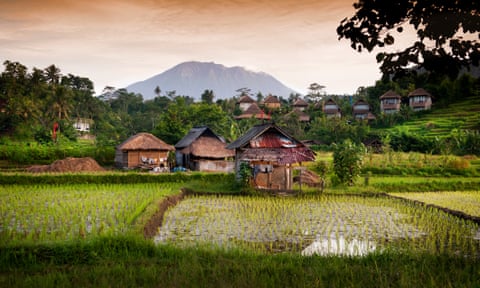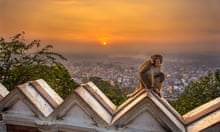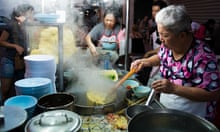THAILAND
Nan

Considered by many to be the most remote city in Thailand, Nan lies in a river valley along the Thai-Laos border. Indeed, Nan was so difficult to reach that it managed to stay autonomous for centuries, only incorporating itself into Thailand proper in the 1930s. Today, Nan still retains mystique as a little-known former kingdom that boasts strong Lanna (Northern Thai) influence.
Nan province is rich in natural beauty, as its national parks can attest. Arguably the most famous national park – Doi Khu Pha – offers the province’s highest mountain and a smattering of villages featuring the Mien, Lu, Hmong and Htin tribes: ethnic groups uncommon in the rest of Thailand. Nan’s most famous temple, Wat Phumin, is known for its beautifully drawn murals, while visitors can dig deeper into Nan’s history at the Nan National Museum.

Nan is not the type of place for the Ibiza-type partier or chi-chi bar-hopper. However, cafes and restaurants devoted to good food and beer are easy to find. Hot Bread (38/1-2 Suriyaphong Road) serves Thai, western and Indian dishes, as well as its namesake freshly baked bread. Just next door, the Hot Bread owners run a khao soy cafe that draws queues in the morning. Java lovers should make for Nan Coffee (54/23 Moo 5, Nonthaburi 1 Road). Meanwhile, patient diners can wait for the late afternoon when vendors begin to set up next to the river. In terms of accommodation, the most solid choice is Dhevaraj Hotel (doubles from £27 B&B).
Chawadee Nualkhair
Loei province

Photograph: Alamy
While Nan’s cultural history makes it part of northern Thailand, neighbouring Loei province is technically a part of the Thailand’s north-eastern Isaan region. Tucked alongside the Mekong River border with Laos, Loei is a mountainous mix of rice paddies, flowery meadows and dramatic scenery that remains a relatively underexplored part of the Land of Smiles. Known among Thais as the “Sea of Mountains” and the kingdom’s coldest province, Loei serves enterprising travellers ample opportunities to explore the local flora and culture.
Among the cultural highlights is the Phi Ta Kon (or Ghost) festival. Held around June or July (in the first week after the sixth full moon of the year), this festival is said to have started as an attempt to please the local spirits in charge of protecting the land and ensuring adequate rainfall. A procession is held in their honour, with participants dressed as the spirits in colourful masks made from coconut trees.
Loei sports other attractions. Phu Kradueng national park, with its acres of forestland and waterfalls, is a hiking paradise, while Huai Krathing reservoir is popular with locals looking to relax on one of its floating pavilions. There is even a vineyard, Chateau de Loei, where you can sample the local grape. Gourmands seeking to taste genuine Isaan food – similar to that of neighbouring Laos – can visit Loei’s night market to sample delicacies, such as snails, frogs and deep-fried crickets. A less-challenging option might be the restaurant Ganga overlooking the Mekong river. Meanwhile, guests looking to take a breather from the downtown bustle can check into Loei Palace Hotel (doubles from £18 B&B), a local landmark.
CN
CAMBODIA
Kratié town and its surrounds
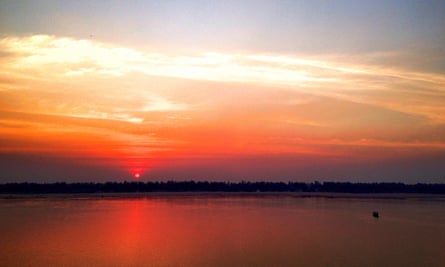
Few tourists stray into Cambodia’s “wild east” where, beyond Kampong Cham, the main roads are dirt tracks or just poorly surfaced. Yet this sparsely populated region offers a quintessential slice of Cambodian rural life largely unaffected by the world beyond.
Kratié is a little market town 216 miles north-east of Phnom Penh. A spattering of tourist-friendly cafes and hotels has sprung up near the central market place or facing the Mekong river. An evening stroll is the ideal time to absorb the spectacle of sunset. It’s like watching a giant blood orange fall from a tree in slow motion. As the sun dips behind the treeline it turns the sky a dazzling vermilion, tinting purple the French colonial villas, traditional wooden stilt houses and Wat Roka Kandal – a beautiful temple that dates back to the 19th century.
The nearby river island of Koh Trong boasts the alluring possibility of seeing Cantor’s giant soft-shell turtles in the wild. After a short ferry ride from an unsheltered wharf, the Preah Soramarith Quay (preceded by a long, hot wait), visitors enter a bucolic world of fruit plantations and rice paddies still tilled by Cambodia’s iconic white cows, the humped zebu.
The local community office advertises rural homestays organised by NGOs, bicycle hire and ox cart tours. The 8.5-mile perimeter route takes you right around the island’s edge. It’s unchallenging and climaxes with the sight of a floating Vietnamese village buoyed-up just off the south-west tip of the island. The Vietnamese are a recognised ethnic minority in Cambodia and this community lives offshore, though they’ve established a Vietnamese-style temple on the island. An unexpected treat after a hard day’s pedalling is Rajabori Villa Resort in the north-east of the island, where it’s possible to cool off in the pool for just $5 (doubles from $65 a night).

The route north out of Kratié is so breathtakingly scenic one almost forgives the dismal quality of the roads. It’s a necessarily bumpy tuk-tuk ride in order to take in Kratié’s rare ecological treasures. In Phnom Sambor, 22 miles north of Kratié, visitors are guaranteed a sight of the soft-shell turtles. In the hallowed grounds of the Pagoda of One Hundred Columns, a small breeding centre aims to return the turtles to the river.
Closer to Kratié the fishing village of Kampie offers boat trips to view Kratié’s other aquatic marvel, the Irrawaddy dolphins. Though locals have long revered the dolphins, believing them to be half human, half fish, their numbers have diminished in recent years due to electric rods and explosives used for fishing. Don’t expect any flipper-style antics, these retiring creatures only surface to breathe.
Thomas Bird
Kirirom national park

All that remains of the king’s palace is the fireplace. Twenty feet tall, it was built in the 1940s by the king and his acolytes. It stands on a flattened mountain top. The view is of Cambodia’s only high-altitude pine forest, in Kirirom national park – two hours’ drive southwest of Phnom Penh. The scenery is almost alpine, the skinny pines saluting the sun, the air aromatic and fresh. When the Maoist Khmer Rouge retreated here after losing power in 1979, the guerrillas smashed the palace along with 150 surrounding villas that once made up the king’s “Happy Mountain” resort. Some buildings are intact - more deserted than ruined.
Today, Kirirom is popular among locals but often overlooked by foreign visitors. Away from the hot chaos of the capital, there are peaceful treks, mountain biking and dips in waterfalls. A stay at Kirirom Mountain Lodge (doubles from US$35; from $60 on weekend), a converted 1940s villa near Oamrei Phong village in the centre of the park, Moroccan chef Bouchaib serves flatbread, honey-dripped and dotted with raisins. Guests can eat while surveying the green expanse of cardamom forests below.
Nathan Thomson
MALAYSIA
Taiping town
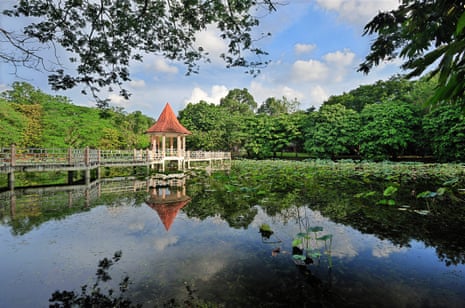
Penang and Ipoh are now hot tourist destinations in Malaysia. But the road between them is strewn with small towns, each with their own charms and history. Taiping is perhaps the most storied of them all: once a wealthy tin mining hub, it saw bloody feuds and rapid development in the 19th century. British colonialists set up base here, leaving behind churches, gardens and neoclassical buildings.
These days, Taiping defies its eventful past, settled in the sleepy yet steadfast rhythms of a market town. But what a market it is: two magnificent wooden arcades, dating back over 130 years, host fruit sellers by day and hawkers by night. Food is cheap and delicious: try local dishes such as kuay teow goreng (wok fried noodles with fishballs) and chee cheong fun (rice noodles drenched in spicy sauce and sesame seeds).
On the fringes of town, the Lake Gardens attract joggers and cyclists to sprawling green grounds, lined with ancient rain trees. You can rent a bike to find the most scenic spots. But for wilder nature, head just a bit further towards the jungle and take a dip in the waterfall at Burmese pool. If you’re staying more than a day, hike up Bukit Larut, also known as Maxwell Hill.
To get to Taiping, take the ETS train from Kuala Lumpur Sentral. The three-hour journey passes through beautifully rugged, limestone landscapes. Louis Hotel offers mid-range hotel rooms in the town centre from £20 a night.
Ling Low
North Borneo’s secret beaches
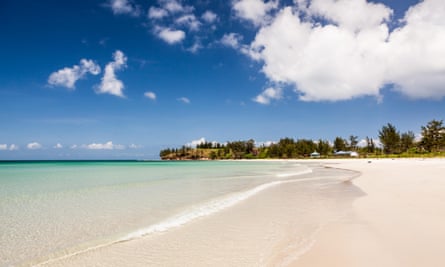
Simpangan Mengayau, Borneo’s northernmost rocky headland close to drowsy Kudat, is a popular day trip from Sabah’s capital Kota Kinabalu. People come to this celebrated “Tip of Borneo” to see the South China Sea crash over the end of the world’s third largest island and take home a few heroic selfies. Oddly enough, few linger longer on the kilometres of unspoilt coastline southwest of the Tip. Languishing in solitude due to poor road connections and a lack of tourist facilities, these lonesome beaches have been one of North Borneo’s most treasured wild camping spots for years.
Things are slowly changing: inspired by the efforts of British hotelier Howard Stanton, who opened eco-resort Tampat Do Aman (dorms in Rungus longhouses for £8 a night; en-suite jungle chalets from £30 a night; shuttle service from Kudat to Simpangan Mengayau: £3 each way tampatdoaman.com.my) a few years ago, the local Rungus people are transforming their beachside villages into charmingly rustic bed and breakfasts – think bamboo longhouses on low stilts with slanted walls and thick dried nipah roofs.
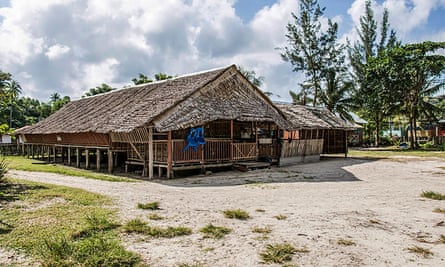
Simpangan Mengayau’s coast has plenty to keep visitors busy: besides jungle hiking, Kosohui Beach thrives with young local surfers, and Bavang Jamal Beach has fewer currents and a snorkel-perfect reef. Further down the coast, islet Pulau Kulambu has dive sites and can be explored on foot via a sandbank. And beyond Kulambu Beach’s last crest, friendly Rungus fishermen run homestays right on Loro Bay’s secluded white crescent. To stay here, contact Jacky Bin Justin (+60 1953 47543)
One daily Kudat-bound bus leaves Kota Kinabalu’s Padang Merdeka at 8.30am, taking about four hours. Shared taxis are more frequent and quicker. Once in Kudat, rent a motorbike for maximum flexibility.
Marco Ferrarese
INDONESIA
North Maluku

In an archipelago packed with adventure, North Maluku stands out for sheer potential: the 2016 total eclipse of the sun brought these wild and wonderful East Indonesian islands to the world’s attention briefly but they remain firmly off the beaten track. There aren’t many places on earth where you can snorkel with walking sharks one day and head into the jungle to meet hunter-gathering nomads on the next, or dive an underwater volcano then visit a sultan’s palace. Gamalama volcano dominates Ternate island, which is replete with spice plantations and colonial forts.
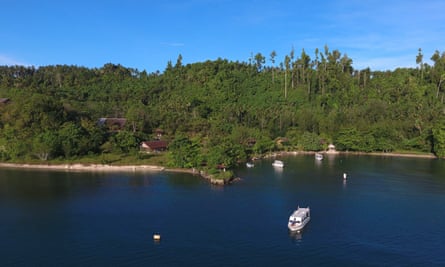
Ternate City, the region’s de facto capital, has a good range of accommodation and reasonable facilities. Morotai, where the last Japanese second world war soldier to surrender hid for almost 30 years, offers dugong, secret surf breaks and stunning wall diving, as well as some staggering offshore islands: camping on white sand Dodola is wonderful. Weda (from £65pp full-board) is an attractive eco-cum-dive resort on the largest and most adventurous of the islands, Halmahera, where the spirits of the ancestors are believed to leave giant footprints in the forest.
Theodora Sutcliffe
Sidemen, Bali
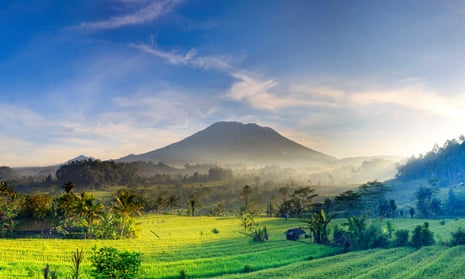
Rice terraces, volcano views and jungle-tangled gorges make sleepy Sidemen feel like the Bali that time forgot. There’s not a great deal to do in this rambling district in the foothills of Mount Agung, and it’s a fair old schlep from the tourist meccas of Ubud, Seminyak, Nusa Dua and Canggu, but that’s rather the point. Wander through the rice paddies to a temple or two, get lost on the web of shady paths that weave their way through the woodlands, or simply soak in the staggering views of Bali’s sacred mountain, Gunung Agung.
Talisman offers weaving classes, Agung Silver has silver-smithing classes (both £26), and several spots can arrange cooking courses. The scenic but slow road to Bali’s mother temple, Pura Besakih, makes a lovely drive; local tour companies can arrange volcano climbs and rafting trips. Most accommodation clusters outside the village of Tabola. Families should look no further than Kubu Tani’s attractive two-storey cottages with outdoor bathrooms and jaw-dropping views (from £38 for two B&B); Teras Bali (rack rate from £35 B&B) offers spacious, stylish rooms – the higher levels have the best views – plus generous breakfasts, a pretty pool and a spa; Embang (+62 0 853 3399 7092, £20 B&B) has two modern, fan-cooled bungalows right on the edge of the rice terraces, with lovely valley views. Book ahead as walk-in rates can be optimistic.
TS
LAOS
Xe Bang Fai river cave
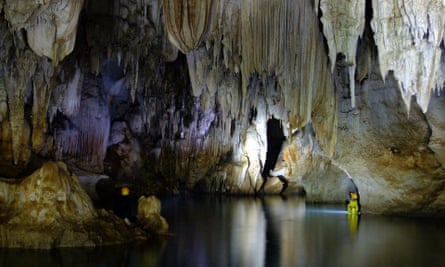
One of the world’s largest river caves, in central Laos, can be explored by kayak. Buried deep amid the limestone pinnacles of Khammouane province in central Laos, the Xe Bang Fai river is navigable for four miles through a limestone tunnel which at its widest point is 200 metres and at its highest is 120 metres. Visitors can kayak through in search of the world’s largest spider, the foot-wide giant huntsman, only discovered in 2001; one of the world’s largest single rimstone basins; and the world’s largest hexagonal cave pearls, lined up like a monster’s eggs near a viewing gallery known as the dragon’s hatchery. The adventure can be continued by camping next to the jade-hued pool at the mouth of the cave.
This remote region is so off-the-beaten-track only a few hundred foreigners have ever entered the cave. Stay at the Nong Ping community guesthouse (the closest village to the river cave entrance), or at nearby Langkhang town at the Saiphoulouang Resort (rooms from £9, +856 030 915 8000). Wooden kayaks can be hired on the spot but to traverse the full passage (and portage over the five rapids), you’ll need to go with Green Discovery and its inflatable kayaks.
Claire Boobbyer
Nakai Nam Theun national protected area
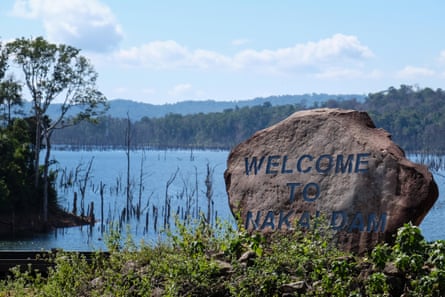
Deep amid the karstic peaks of central Laos lies a truly lost world of limestone majesty, rivers, pristine forest and rare wildlife. This area is just opening up. It’s home to extraordinary wildlife such as colourful red-shanked douc langur monkeys, singing southern white-cheeked gibbons, Asian elephant, Asian small-clawed otter, and saola (aka the Asian unicorn), as well as five species of hornbill.
Most visitors skirt the border of the park by doing the popular motorbike circuit The Loop. At the western edge of the protected area the Phosy Guesthouse at Thalang (doubles from £7.50) is offering two-day camping trips (£94 for four people). The trips involve boating on the Nam Not river with a village guide, cooking fish on the campfire for dinner under the stars, and camping overnight on a river beach. Visitors will hear singing gibbons and birds in this Annamite wilderness in the morning before hiking to a waterfall. Project Anoulak is working to protect the rare wildlife, as are other NGOs. Look out for future ecotourism projects, a new French-built lookout and trail, and Laos’ first triathlon due to take place in the area in December.
CB
VIETNAM
Con Dao archipelago

This enigmatic island archipelago, 160 miles south of Ho Chi Minh City (a 45-minute flight costing around £60 one-way with Vietnam Airlines), is still pretty much off the beaten track for travellers. It’s a 12-hour ferry ride from Vung Tau port but in June this year a new Superdong boat service is set to speed over in 2hr 30mins for £10.50 one way from Tran De Port, Soc Trang. The cluster of 16 islands boasts natural beauty, wonderful wildlife including nesting sea turtles in Vietnam, sweeping arcs of sand, and a curious history.
For many years the largest of the islands, Con Son, hosted a French penal colony and later a US prison, in which many senior Vietnam political leaders were incarcerated. The islands are now home to the largest number of nesting sea turtles in Vietnam. Most of the area is now a national park with stunning wild beaches, endemic orchids, great coastal paths, snorkelling and diving. Increasing overnight options for all budgets add to the appeal. Among them is a two-bed studio suite in a 1936-built French villa on Con Son (from £48pn, two-night minimum stay, airbnb.co.uk).
CB
Gulf of Thailand islands

Another island, off the east coast in the Gulf of Thailand (10 miles south of the Cambodian coast), is Phú Quoc, on which tourism is growing. Dangling off the island is the An Thoi archipelago which has new places to stay in among its 15 scattered islands. Stellar beaches – all turquoise coral seas lapping at dazzling sugar-white sands shaded by palm trees – include Fingernail Beach on Hon Mong Tay, Hon Vong Beach on the island of the same name, and Hon May Rut.
At Hon Dam, visitors can stay right on the beach in a chic shack (from £47pn B&B, sleeps two, (airbnb.co.uk). The shack’s host also offers bargain dorm accommodation on the island, and boat transfers from An Thoi port are included. Totally remote, between the mainland and Phú Quoc, but with a boat service, is Nam Du. Here, visitors can stay close to the sea at a new hostel (bed from £18pn airbnb.co.uk) Foreign tourists need paperwork processed by ferry company Ngoc Thanh in Rach Gia, on the mainland, which the hostel will organise.
There are a couple of accommodation and homestay options on Nam Du, and isolated Hon Son. Superdong also runs ferries to the islands. Double check before making your travel plans as the right paperwork must be organised in advance.
CB
